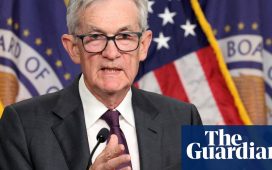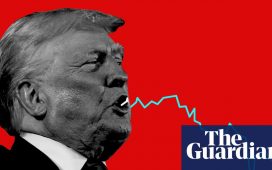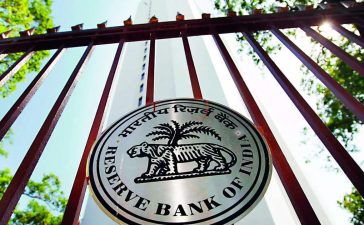They punish governments that dare to deviate from financial orthodoxy. They strike fear into the hearts of finance ministers. They were seemingly a dying breed in the years between the crash of the late 2000s and the 2020 Covid-19 pandemic, but now the bond market vigilantes are heading back into town.
There was a time, not so long ago, when governments were able to borrow as much as they wanted at rock-bottom rates. For almost three years, investors paid for the privilege of lending the German government money because bond yields were below zero.
Those days are over. It now costs the German government almost 3% to attract buyers for its 10-year bonds. In the US, the interest rate – or yield – on a 10-year bond briefly rose above 5% earlier this week to its highest level since 2007. The yield on 30-year UK government debt hit levels not seen since the late 1990s.
Unusually, the rise in bond yields has come at a time of heightened international tension. Wars make investors nervous, and when conflicts start there tends to be a flight out of shares and into the haven represented by bonds. US treasury bonds are considered one of the safer havens, because the dollar has the lucrative privilege of being the world’s reserve currency.
This time it has been different. While there was a brief decline after the start of the war between Israel and Hamas earlier this month, US bond yields quickly resumed their upward trend.
So what’s happening? Inflation is past its peak and is falling everywhere across the west. Interest rates are at – or close to – a peak. The global growth outlook is none too rosy. All of which should be good for bond prices, which go up as bond yields fall and vice versa.
Jim Wood-Smith, of Hawksmoor Investment Management: “We can all be reasonably confident that we are not to have a repeat of the last year’s inflation challenge and that bank interest rates are at, or within a bull’s roar of, their cyclical peak. There are also increasing signs that economies are starting to struggle: housing markets have cooled, as have job markets. Consumers are starting to rein back on their pre-Christmas spending. The weather is dreadful. Yet bond yields keep rising, and they shouldn’t be.”
Wood-Smith said there were two big factors at work. “First, government finances around much of the world are, broadly, in a ghastly and expensive mess. This becomes viciously more expensive with each rise in bond yields. Second, the Federal Reserve and the Bank of England are persisting with their policies of selling vast amounts of treasuries and gilts back into the open markets, in the process known as quantitative tightening.”
Gerard Lyons, the chief economic strategist at Netwealth, said the switch to central banks selling bonds as opposed to buying them was having a marked effect on the bond markets. Central banks were wrong to assume quantitative tightening – bond selling programmes – was a purely technical exercise. “Central banks have gone from being guaranteed buyers of bonds to being guaranteed sellers – and that has economic and financial market implications.”
Lyons said there were other factors explaining why bond yields were rising: the feeling that interest rates would need to stay high for a prolonged period to eradicate underlying inflationary pressures, and concern about the size of the budget deficits being run by governments. Term premiums – the added compensation that investors demand as insurance for holding long-term debt – have been rising.
In particular, bond market investors are concerned about the $1.7tn deficit being run by the Biden administration in the US. The fact that the US bond market is by far the biggest globally means that concern about US fiscal policy has knock-on effects elsewhere.
Britain is one of the countries affected by the increased costs of servicing government debt, with the chancellor, Jeremy Hunt, warning that interest payments this year would be £20bn to £30bn higher this year than forecast in the spring.
Vicky Redwood, the senior economic adviser at the consultancy Capital Economics, said: “The rise in bond yields will obviously push up governments’ debt-interest costs. This comes against a backdrop of [quantitative easing] effectively shortening the average maturity of government debt and increasing the speed with which higher interest rates are reflected in debt interest costs.”
Redwood said estimates from the US Congressional Budget Office (CBO) and the UK’s Office for Budget Responsibility suggested each percentage point rise in short- and long-term interest rates would raise government borrowing in 2024 in both countries by the equivalent of 0.5% of GDP. The impact on annual borrowing would increase as more of the debt matured, so that by 2027 the cost would be between 0.7% and 0.8% of GDP.
“If it is true that markets are getting nervous about governments’ fiscal positions, then there is the risk of falling into a downward spiral,” Redwood added. “Markets worry about government debt, which raises term premiums and interest rates, which makes the debt situation even worse and makes markets even more concerned.”
Analysts expect bond yields to fall back once the vigilantes are satisfied that inflation is licked, interest rates are on the way down, and deficit reduction programmes are being adhered to. In the meantime, however, sky-high bond yields risk triggering a deep recession.









